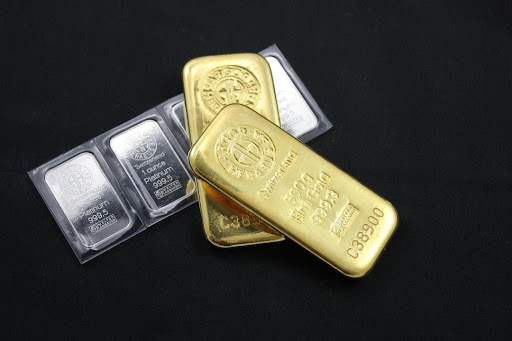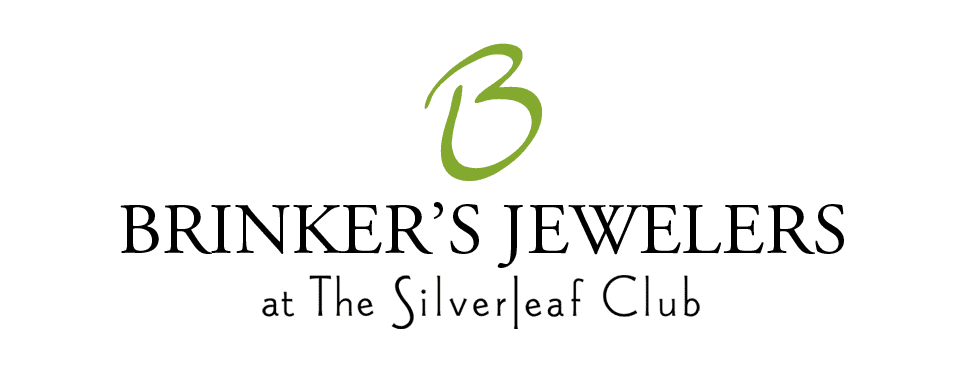Diamond stud earrings have been popular since the late nineteenth century, and it’s easy to see why. They have a rare versatility, navigating between subtlety and glamor. You can take them from day to night and wear them with jeans or ball gowns. But how do you choose the perfect earrings, settings to stones? This complete guide to diamond studs will help you find the right pair for you.
1. Consider the Diamond Shape and Style: Solitaire vs. Pavé
Most people think of round diamond solitaires when they hear “diamond stud”. The two most common shapes for diamond stud earrings are round brilliant and princess cut, which is more square. Both of these maximize sparkle. It is also easier to match stones with such equal proportions. While you could theoretically find or design diamond studs in any of the traditional diamond cuts, certain cuts lend themselves more to earrings. You may also want to consider the shape of your face. Thinner faces look better with round cuts, while rectangular cuts flatter broad ones.
But there are more options out there when it comes to the design and shape of your earrings.
Perhaps you want a more artistic design? Pavé earrings might be the way to go. They are more budget-friendly than solitaires and have a wow factor with sparkle. The word pavé comes from the French for “paved.” In this style, small diamonds are clustered together, paving the covered surface.
Individually, these small diamonds are called melee diamonds, a term that covers any diamond under .20 carats. In addition to pavé earrings, you might also find tiny diamonds arranged in a circle or another shape.
Either way, you can’t go wrong.
2. Look for Diamond Quality
Before picking diamond earring settings, you need to know what you want in the diamonds themselves. Here are things to consider when looking for quality stones.
Source
Not all diamonds come from mines. Laboratory-grown diamonds are chemically and physically identical to the ones grown by Mother Earth over millions of years. They are significantly less expensive than their counterparts but may lack some of the romance and history of a naturally created diamond. Lab-grown diamonds also are rated on a slightly different scale than natural diamonds. Keep this in mind when looking at the certification associated with your stone.
Lab-grown diamonds are considered ethically sourced and conflict-free. However, these days you can — and should — hold mined/natural diamonds to the same standards. For example, De Beers requires that its Forevermark diamonds meet rigorous quality standards and are produced under conditions that ensure ecological health and social justice.
The 4 Cs
When evaluating diamonds, take a note from the professionals and look for the four Cs: carat, cut, color, and clarity. These are the elements that make your stone what it is. They’ll determine its weight, rarity, appearance, and price, so it’s important to understand each.
1. Carat
Diamond’s size and weight is measured in carats, which is often abbreviated ct or cts. You may also see the notation ctw, which refers to the carat total weight of a group of diamonds.
One carat is equal to a fifth of a gram, and carats can be subdivided into fractions or points. One carat has 100 points, and a half-carat stone may also be called a 50-point diamond. This allows for greater precision in determining stone weight.
In general, larger stones are worth more than smaller ones, due to their relative scarcity. However, the increase in value is not directly proportionate to the increase in carat weight. Four 25-point stones will cost less than one 100-point (one ct) stone.
Moreover, carat weight is only one of the factors that goes into determining a gem’s quality and price. A well-cut smaller stone may be more expensive than a poorly-cut larger one.
2. Cut
A diamond’s cut determines how well it interacts with light. It’s a measure of beauty rather than the shape of the stone.
The Gemological Institute of America (GIA) rates a diamond’s cut as:
- Excellent
- Very Good
- Good
- Fair
- Poor
One key factor when rating cut is the stone’s proportions. The relationship between the various parts of the diamond should reach the ideal target for that shape. When they reach this target, the diamond will have maximized brightness and sparkle/scintillation. It will also achieve the most “fire,” which is the stone’s ability to scatter light into the colors of the rainbow.
Other factors that GIA takes into account include:
- Symmetry of facets
- Polish of facets
- Thickness of girdle (the widest part of the diamond)
A thicker girdle results in a more durable diamond.
3. COLOR
The most popular diamonds are white or colorless diamonds, but that doesn’t mean that color isn’t a vital part of your diamond’s appearance and value.
Many of these color distinctions are so subtle as to be invisible to the untrained eye. These slight differences make a very big difference in diamond quality and price. The scale begins with the letter D, representing colorless, and continues with increasing presence of color to the letter Z, which represents a light yellow or brown. Diamonds are color-graded by comparing them to stones of known color under controlled lighting and precise viewing conditions.
However, you don’t have to limit yourself to white or colorless diamonds. Maybe you’d rather have a more vibrant pair of studs. Colored diamonds, also called fancies, can be used for diamond studs as well.
In contrast to white diamonds, colored diamonds are graded according to their intensity, therefore, their more vibrant hues are more highly valued. The scale for fancies runs from Faint to Fancy Deep.
Colored diamonds can add a touch of romance or sophistication to this jewelry-box staple. Just be forewarned that it may be more difficult to find matched pairs of the rarer colors like blue and pink.
However, remember that the best diamond is the one that fits your budget and personality. For example, you may like a stone with a little more yellow in it, even though it’s technically less valuable. Diamond studs should be loved and worn rather than appreciated for their price tag.
4. CLARITY
Clarity is a measure of a diamond’s flawlessness. Most diamonds have both internal flaws (inclusions) and external flaws (blemishes). Truly flawless diamonds are both rare and expensive.
While clarity impacts a diamond’s appearance, a good cut will make the most of a stone, often compensating for lower clarity.
Diamond clarity runs from flawless to included:
- Flawless (FL)
- Internally Flawless (IF)
- Very very slightly included (VVS1, VVS2)
- Very slightly included (VS1, VS2)
- Slightly included (SI1, SI2)
- Included (I1, I2,I3)
At the bottom of the spectrum, I3 diamonds will have noticeable flaws.
5. Certification (The 5th C)
But there’s also a fifth C that matters to diamond selection: certification.
A diamond grading report starts with the four Cs, but it goes beyond them with other measurements. A jeweler uses all of these when pricing a stone, and the proper certification ensures that you get what you pay for.
There is one exception to the rule. You shouldn’t require certification when purchasing diamond studs made up of melee stones. With stones this small, the cost of certification actually exceeds the value of the diamonds themselves, making certification impractical.
The most rigorous and consistent labs that certify diamonds are:
While they may not reach the high standards set by these two, other certifying bodies include:
Match Your Diamond Earrings
You don’t want to compromise the beauty of your diamonds with a poorly matched pair. Your studs should be as close to identical as possible.
Use search filters to navigate loose diamond inventories. The most important criteria for a match are:
- Size
- Color
- Proportions
- Optical performance
Size and color are fairly self-explanatory criteria and easily matched.
You also want diamonds with similar proportions. Pay attention to the depth of the stone and its table percentage, both reported as part of its certification. Table percentage refers to the relationship between the width of the diamond’s top facet and the total width of the stone.
Finally, the diamonds should perform similarly when light hits them. Jewelers can display this in a number of different ways, from high-definition video to images generated with light-performance tools. Make sure each earring sparkles equally.
3. Diamond Earring Settings
There are several aspects of earrings settings to consider when you select your dream pair of diamond studs. Things to consider are if you want something preset or custom, type of mounting, and what metals will compliment your stones and style.
Preset vs. Custom
With preset diamond earrings, the jeweler has already selected the jewels and mounted them. The earrings are finished and ready to wear. Preset can come in a more distinctive and original designs. If you want your studs made up of several stones, then pre-set is often the way to go.
Custom design, even for solitaires, will ensure a one of a kind piece and that your stones have been properly certified, giving you the peace of mind in your purchase.
Mountings
You’ve got the stones all figured out. Now you need to know — what are the different diamond earring settings and mounting styles?
Halo
A halo setting surrounds your solitaire with a ring (or halo) of smaller diamonds. You get more diamond surface area and plenty of glitz.
While a single halo setting is most popular, you can also find earrings with double halos — two concentric rings surrounding the center stone.
Halo diamond stud settings impart great old-world glamor to your earrings. They look opulent, like the luxurious and timeless pieces that they are.

Bezel
Bezel settings surround a diamond solitaire with a thin band of metal that holds it in place. Mounting stones in bezels can be particularly tricky, requiring exceptional skill on the part of the jeweler, which can make them more expensive.
Bezel settings impart a lovely, classic look, but their best feature is their security. These stones aren’t going anywhere. Bezels provide the most secure setting for your diamonds.
Prong
Prong settings provide a minimalist backdrop to your stone, leaving the focus on the exposed diamond. They usually secure the diamond with three or four thin strips, but can feature more prongs when the design calls for it.
There are three common types of prong mountings, each named for the way that the setting appears when viewed from the side.
- Basket – In a basket, four prongs hold the stone over a flat base. Between the base and the surface of the stone, another thin strip runs around the prongs, completing the basket shape.
- Martini – The martini setting features three prongs in a V-shape that resembles a martini glass. Alike to the basket mounting, another thin strip connects the prongs between the point of the base and the surface of the stone. The classic design pleases most, but some find that the point digs gently into the hole of their piercing.
- Crown – Unlike the basket and martini settings, the crown doesn’t feature another strip of metal that runs around its prongs. The much thicker prongs don’t need it. Some prefer the more substantial crown setting for its additional security. Others don’t like the way that it holds the diamond further from the ear because it could cause the diamond to droop down against it.
Prong settings leave more of the stone exposed than either halo or bezel settings. Without a surrounding strip of metal or diamonds, the visible centerpiece doesn’t lose any of its size.
The uncovered diamond is also most available to the light. Because more light can enter the stone, it sparkles to its full potential.
Metals
Most diamond jewelry is set with either gold or platinum. You’ll want to choose the right metal for earrings settings that complement both your diamonds and your complexion

But first things first — you need earrings that won’t irritate your skin. Before comparing Gold vs. Platinum. Let’s address allergies. While you can technically be allergic to any type of metal, true gold allergies are very rare, and even they are more common than the virtually unheard-of platinum allergy.
Most people who develop allergic reactions to gold jewelry actually suffer from a nickel allergy, commonly used to create a gold alloy. Because gold is so soft, jewelers need to combine it with a small percentage of another metal. That’s why gold is classified according to a different kind of karat, spelled with a K and indicating purity.
A karat (k) is equal to one twenty-fourth of the whole. 24k gold is almost pure gold. It has less than 0.1% of other metals and very rarely causes any reaction. On the other hand, 14k gold is only 14 parts gold (a little under 60%) and 10 parts other metal.
Color also matters. White gold is more likely to be mixed with nickel than yellow gold, which more often contains traces of copper or silver.
Gold vs. Platinum
It can be hard to choose between platinum and gold. After all, platinum and white gold are virtually indistinguishable to the naked eye. The main differences have to do with metal composition, durability, maintenance, and price.
Platinum is substantially heavier and more durable than gold, which leads to purer metal composition. It also is most frequently blended with palladium or copper rather than nickel, a more common allergy.
On the other hand, platinum is substantially more expensive and may require more frequent maintenance if you intend to wear your diamonds regularly.
Platinum only comes in one color. If you choose to go with gold, on the other hand, you have several options.
Choose a metal that suits your skin tone. Skin tone is more important when buying earrings than when buying rings because of the proximity to your face. Cool skin tones look best with platinum or white gold. Warm tones look better with yellow or rose gold. People with neutral tones luck out and can wear either.
Choose a metal that suits your diamond. Colorless diamonds — diamonds graded D through J — look best with white gold or platinum. Colored metal can reflect in the stone, making your diamonds appear to have more color than they do. On the other hand, yellow or rose gold can really set off diamonds with more color, ones that fall on the lower end of the color scale.
Choose a metal that suits your style. Some people simply prefer some metals. You want a pair of earrings that you love and that works with the rest of your wardrobe. Personal taste is something no article or jeweler can help you find. You already have all the answers.
4. Back it all Up
Don’t risk losing your beautiful diamond earrings! Make sure that your earrings have the proper backs to keep them tightly fastened on your ears.
There are two common types of earring backs: push backs and screw backs. Most stud earrings will come with one of these two.
Push backs — also called friction backs or butterfly backs — slide onto the post of the stud with a tight enough fit that they should hold fast. They’re the most popular backing, and they work best with light earrings under a half carat.
Instead of sliding right on, screw backs need to be, as the name suggests, screwed. You rotate them around a ridged post until they’re tight. They are the most secure backing, and you should use them with any potentially heavy earrings that might overwhelm the looser hold of a push back.
5. Diamond Earring Budget and Selection
Diamond stud earrings come in a range of prices. These prices reflect the diamonds’ source, size, and quality.
You might pay as little as a few hundred dollars for a pair of studs with diamonds that are only .10 carats apiece. At the other end of the spectrum, you can spend tens of thousands on multi-carat studs.
Determine how much money you have to spend on diamond earrings, then find the intersection of luxury and practicality that’s right for you.
Ask yourself your priorities when choosing earrings. Do you want truly colorless gems? Or would you rather have larger studs with more color? How much do you want to spend on the setting, and would you rather compromise on the metal or on the gem?
Going through this article should help and may determine how much each aspect means to you. You might even rank your priorities.
When you’re shopping, compare prices as you move around on the spectrums associated with the 4Cs. You probably don’t want to compromise on cut, but you can easily drop a couple rankings in color or clarity without making a difference that will be easily visible. Those changes can make a big difference in price!
As for carat size, bigger not only means pricier — it means exponentially pricier. How important is it to have full solitaires? Would you be as happy with a grouping of several smaller stones? If you’re looking for everyday solitaire earrings, you might also prefer smaller, higher quality studs to larger ones.
Big price increases occur at the half-carat and full carat marks. Jewelers try to hit these sizes because they can be easier to find and match. But if you can find diamonds just under, you might be able to drop the price without noticeably shrinking the studs.
6. Find Your Perfect Match
You’ve done your homework. You know what to look for when purchasing diamond stud earrings, both in the gems and in the settings. In other words, you’re ready to find a pair that suits you as perfectly as the earrings match one another.
Let us help. Brinker’s Jewelers can help you find the hand-selected diamonds of your dreams, perfect for custom designs. Our owners have personally curated our diamond collection for you to choose from. Or go the all-in-one route with our exceptional diamond stud earrings.
Whatever you decide, the elegance and classic beauty of diamond earrings are only a call, text, or click away. Schedule an appointment with one of our sales staff or find your perfect pair online today.


















